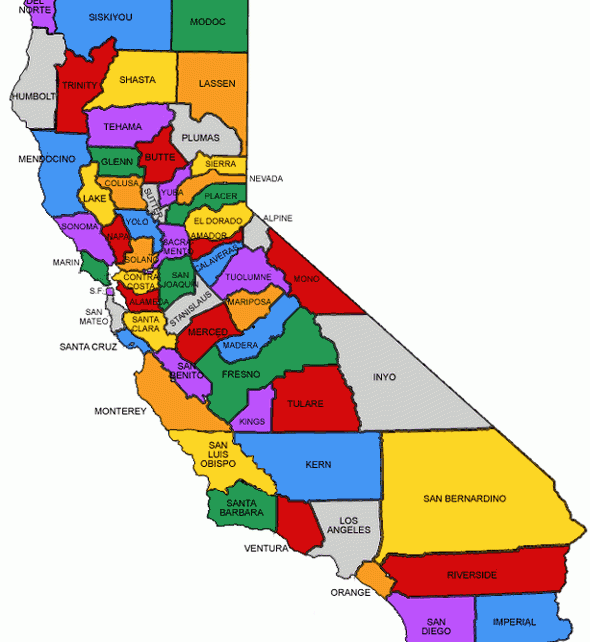
Curious to know what the exact county count in California is? You’d be surprised how many people ask the same question. Whether it’s for school projects, travel plans, or simple trivia, the answer—58—comes up again and again, and stillthat short answer barely scratches the surface.
California’s counties forma patchwork of contrasts: fog-kissed seaside towns, snow-capped alpine districts, fertile Central Valley breadbaskets, and historic mission settlements. None of these counties lacks a unique backstory, shaped byrailroad expansion, cutting-edge innovation, and waves of cultural fusion.
In the sections ahead, we’ll unpackthe timeline that locked the total at 58, the services counties deliver day-to-day, and the outliers that set fascinating records. By the end, you’ll own the knowledge—and be ready to ace any quiz with confidence.
Origins of California’s 58 Counties
Upon admission to the United States, the map contained barely half the jurisdictions we know now. An unprecedented population boom compelled legislators to carve out new counties. By the end of the 1870s, the count had ballooned to 53 counties, and in 1907 the final five were added, setting in stone the now-famous tally of fifty-eight.
Assembly journals reveal that fresh jurisdictions were born because of three overlapping forces:
- Hundreds of rugged miles made court access impossible.
- Economic clashes between miners and farmers triggered secession campaigns.
- Language and immigrant communities wanted self-rule.
By 1920, the political map stabilised. In modern times, no proposal to add a 59th county has cleared committee, prompting analysts to call the era of county creation decisively over.
From Kelp Forests to High Deserts: County Geography
Imagine a line from the Smith River watershed to sun-baked Imperial touching Mexico, and you’ll cross dozens of ecosystems. Coastal counties enjoy fog-cooled summers, while interior giants like San Bernardino or Kern bank on irrigation.
- Sierra jurisdictions such as Mono, Mariposa, and Calaveras store California’s snowpack.
- River-delta territories mix levee farms with wetlands.
- Island counties like Ventura manage marine sanctuaries.
That geographic spread underpins how water rights, zoning, and ag yields diverge so sharply. Weather sets tax bases and lifestyles.
What Counties Actually Do
In California’s layered structure, cities tackle local bylaws, but county boards oversee the bread-and-butter functions that keep daily life humming. From birth to death—vital records, coroner reports, property deeds—all reside at the county clerk or recorder.
Sheriff’s departments patrol towns too small for police forces, while trial courts hear probate battles. Social-services bureaus administer vaccination campaigns. Tax-allocation showdowns occur in monthly Board of Supervisors sessions.
Case Study: Tiny Alpine County
Los Angeles County alone employs 100 000+ workers, showing how elastic the system is. One template doesn’t fit all when land areas shift from 47 to 20 000 sq mi.
In the end, county halls bridge Sacramento’s big laws and local reality. Understanding their remit helps residents demand accountability.
Population, Economy, and Record-Holding Counties
Home to over thirty-nine million people, but that population is far from evenly spread. LA County by itself hosts more than one resident in four. At the other extreme, high-elevation Alpine rarely tops 1 200 inhabitants.
- Largest population: County of Los Angeles
- Fewest people: Alpine
- Widest landmass: San Bernardino County
- Smallest area: City & County of SF
Fiscal bandwidth mirrors population spread. Silicon Valley counties see venture cash flow in at record rates, while Central Valley breadbaskets depend on seasonal labour influxes. Such economic polarity informs legislative redistricting every decade.
Tracking each superlative pays dividends: county metrics shape property taxes and commute times.
Touching All Counties in One Journey
For intrepid travellers, visiting every single county ranks as a top geo-challenge. The classic route kicks off in San Diego, heads north along Highway 1, swings through Monterey, then zigzags across the Central Valley’s orchard belt, before ascending into the Sierra Nevada for old stamp mills.
Regional Mini-Loops
- Southern Swing – Border to wine country; ten jurisdictions in three days.
- Crop-Belt Drive – Ventura to Sacramento; flat-land express.
- Shasta & Siskiyou Turn – mountain lakes and volcano cones; fire-lookout hikes.
Close the circuit in El Centro, with quadruple-digit odometer gains. After that, you can brag that you’ve lived the answer to the county-count question—because your copyright stamps prove it!
FAQ
Wondering how the county system works? Start with these quick answers.
What is the total number of counties in CA?
California officially recognises 58 counties—a total locked in for over a century. Check any authoritative source, and you’ll find the same figure: precisely fifty-eight.
Most populous California county?
Los Angeles County tops the list, hosting a population greater than that of many U.S. states. From Hollywood to high tech, a mix of industries continues to fuel steady inflow.
Least populous California county?
Tiny Alpine County sits at the bottom of the population chart, with fewer than 1 200 inhabitants. Its remote Sierra setting how many counties are in ca naturally restricts settlement, preserving a frontier feel.
Largest county by land size?
San Bernardino County spans the most ground stretching more than 20 000 square miles. You can drive for hours without leaving its borders—crossing ski slopes, dunes, and bedroom communities.
Why does California have exactly 58 counties?
Gold-rush politics, rail expansion, and farmland disputes carved today’s boundaries, with the final adjustments ratified in 1907. Every modern effort to create a new county stalls in committee or dies at the ballot box.
Could a region break away to become its own county today?
Legally, yes—state law allows it, but the hurdles are steep. A break-off region must gather local signatures, win a majority vote in each affected county, and secure legislative approval. That’s why no county lines have moved since the early 1900s.
Why are counties important to everyday life?
Behind the scenes, counties keep daily life functioning: property assessments, public hospitals, welfare programs, and jails. Their wide remit bridges state mandates with community needs, making the 58 jurisdictions essential to all Californians.